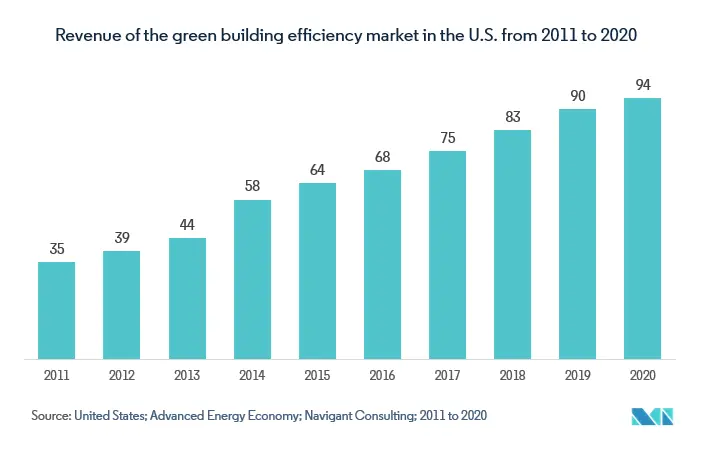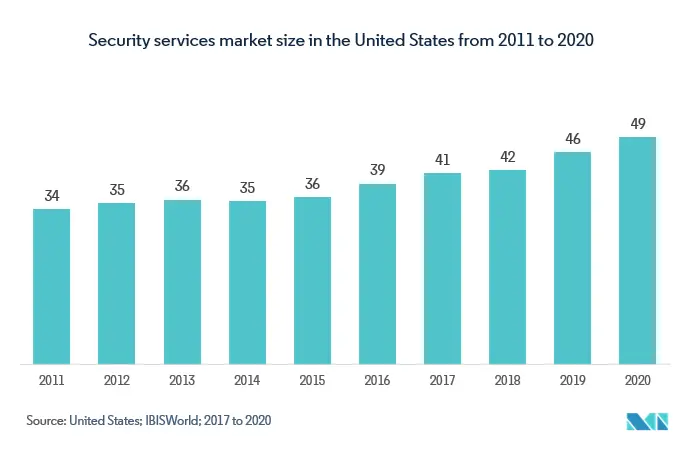Market Trends of United States Commercial Building Automation Systems Industry
This section covers the major market trends shaping the US Commercial Building Automation Systems Market according to our research experts:
Increase in Focus for Designing and Establishing Energy-efficient and Eco-friendly Buildings
- In the United States, the reduction in energy consumption has been a primary concern among commercial building owners and managers to save money. According to the US Energy Information Administration, almost 40% of the energy consumed in the United States powers commercial and residential buildings. According to the New York State Energy Research and Development Authority (NYSERDA), enabling real-time energy management systems can reduce major costs. Such developments have been influencing energy-efficient buildings as part of the smart solutions in commercial buildings.
- According to the US Department of Energy, the buildings sector accounted for about 76% of the electricity used, resulting in a considerable amount of associated greenhouse gas (GHG) emissions, thereby making it necessary for reducing the energy consumption in buildings in order to comply with national energy and environmental challenges and decrease costs to building owners and tenants. By the year 2030, building energy use could be cut more than 20% using technologies known to be cost-effective today and by more than 35% if the research goals are met. Much higher savings are technically possible.
- The major areas of energy consumption in the buildings are HVAC - 35% of total building energy; lighting - 11%; major appliances (water heating, refrigerators, and freezers, dryers) - 18% with the remaining 36% in miscellaneous areas, including electronics. Such instances cater toward an increasing focus on eco-friendly buildings.
- The growing demand for smart offices is also accelerating the development of SEZs (Special Economic Zones). Green HVAC systems are developed for improving energy efficiency and reduce costs. For instance, Ice Energy, one of the prominent energy storage companies based in Glendale, California, released an ice-powered air-conditioning unit, Ice Bear, to cool buildings and, in most cases, reduce a building's net consumption of energy.
- Furthermore, the battery management system is being integrated with intelligent energy management systems across several end-user industries to conserve electricity. Battery management systems are advancing as a lucrative market opportunity, as they encompass not only the monitoring and protection of the batteries but also methods for keeping them ready to deliver full power and several methods for prolonging their life. It further includes services from controlling the charging regime to planned maintenance.

Rising Focus on Security
- Sensors, actuators, and controllers, which collectively serve as the backbone of cyber-physical systems for building energy management, are the primary core technical areas of investment for achieving the US Department of Energy (DOE) Building Technologies Office’s (BTO’s) goals for energy affordability in commercial buildings.
- An aggregated annual energy savings of around 29% is estimated in the commercial sector alone by implementing efficiency measures using the current state-of-the-art sensors and controls to retune buildings by optimizing programmable settings.
- Sensors in buildings can either be wired into the building’s electrical distribution network or can be wireless using an onboard electric power source. Because they are typically concealed within walls, floors, and ceilings of a building, wired sensor networks can be costly and difficult to install in remote or inaccessible locations and reconfigure or retrofit after initial installation. This led to the adoption of the wireless sensor. A protocol created specifically for commercial use, Zigbee is perhaps the most widely used for building automation. Zigbee uses a mesh network for creating long ranges and fast communications via radiofrequency.
- Even without new HVAC equipment, the WSN will improve monitoring and control of environmental conditions that, in turn, lead to energy savings since the equipment is only operated when and where needed.
- Due to the proliferation of smart buildings, attackers have a more extensive range of entry points to access organizations’ networks. This is due to the creation of arrays of new access points from IoT devices. This has lead to the adoption of protocol security, leading to the demand for wireless sensors.
- Further, advancing wireless sensor networks that are automated, plug-and-play, and capable of monitoring multiple parameters through effective power management will enable a low-cost approach to accurately detect and diagnose failures and resulting inefficiencies in building equipment and systems while also allowing for optimal and localized whole-building control opportunities to improve building operations along with reducing energy use.

